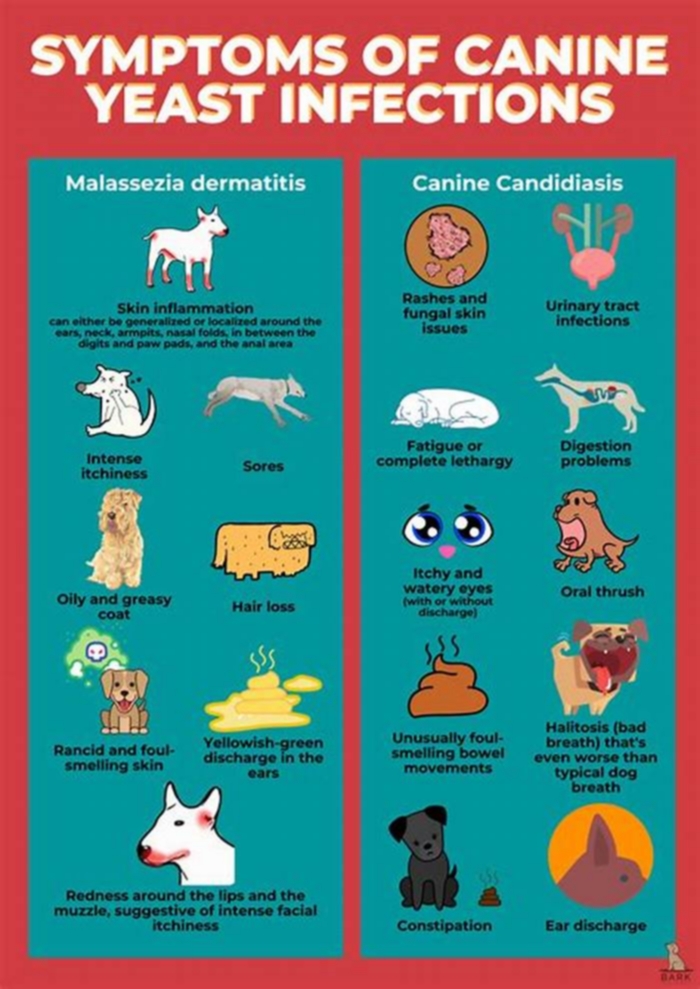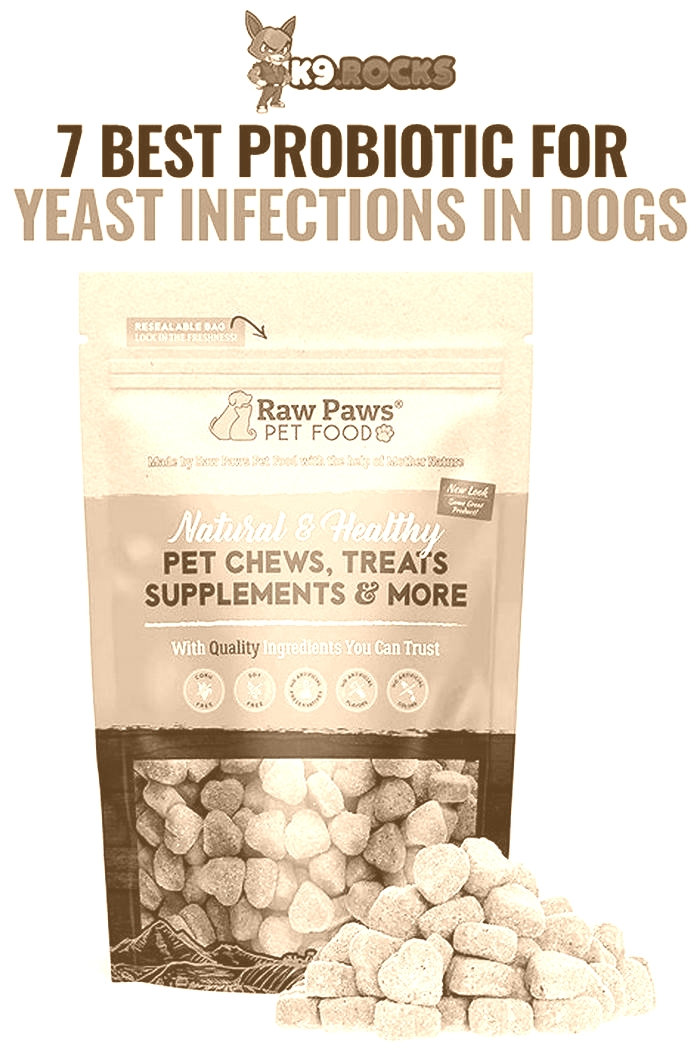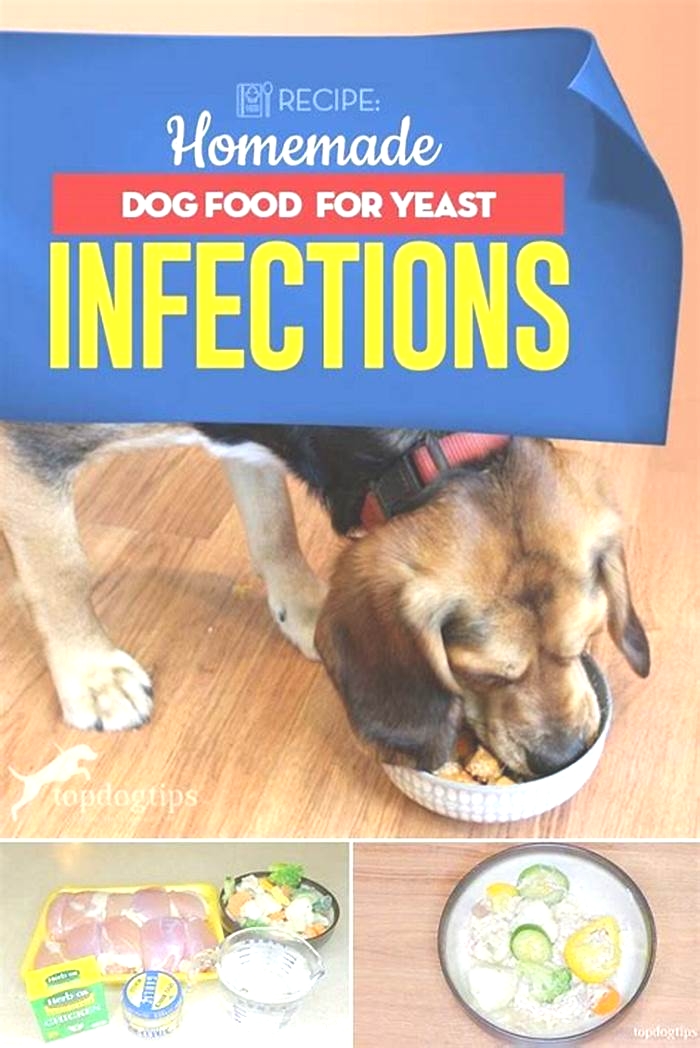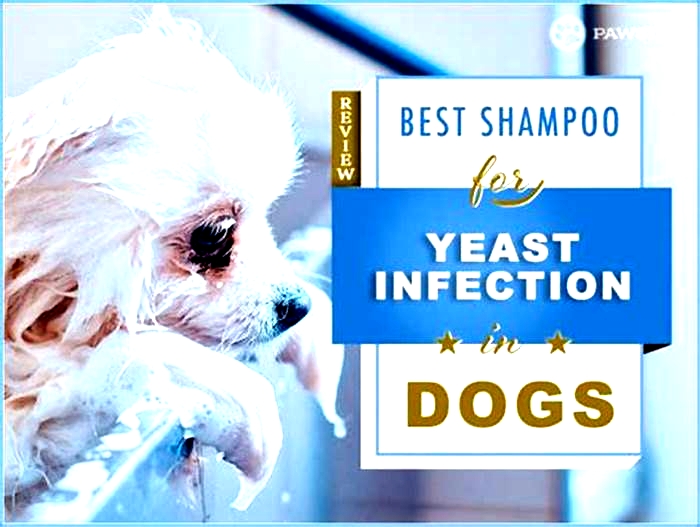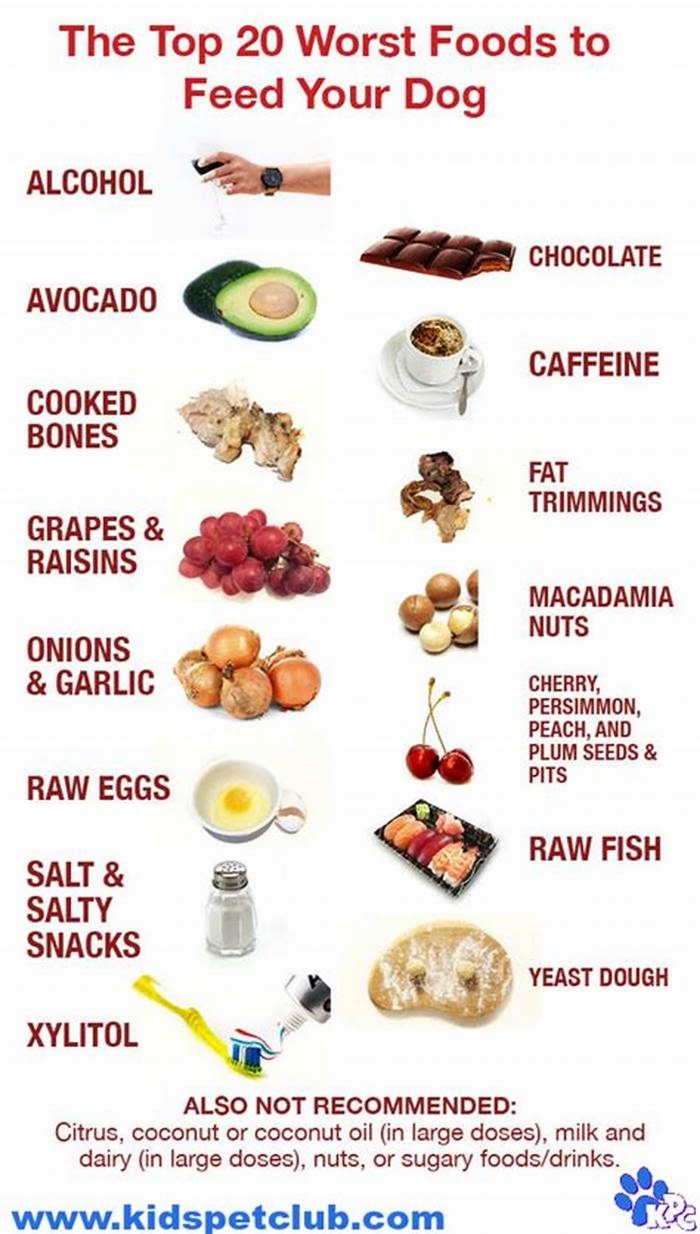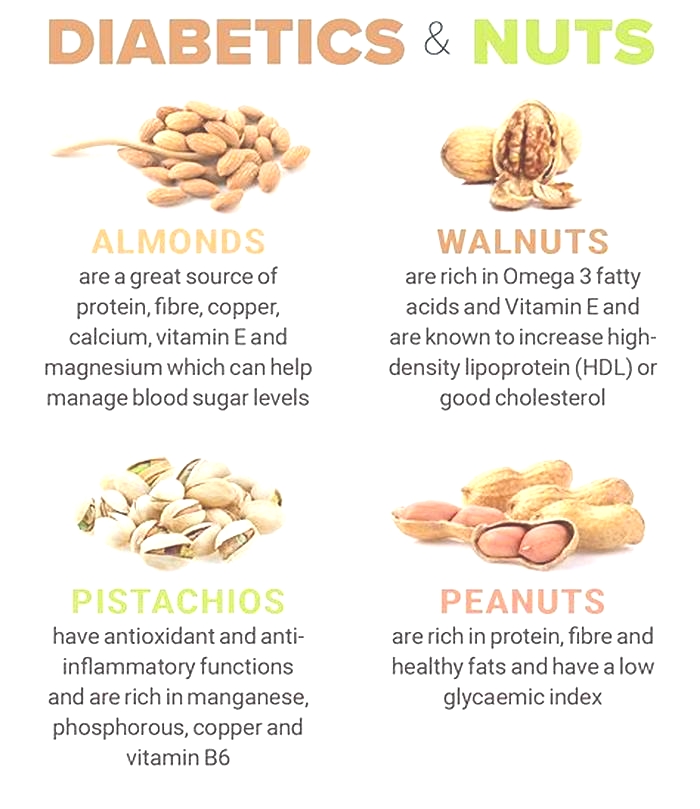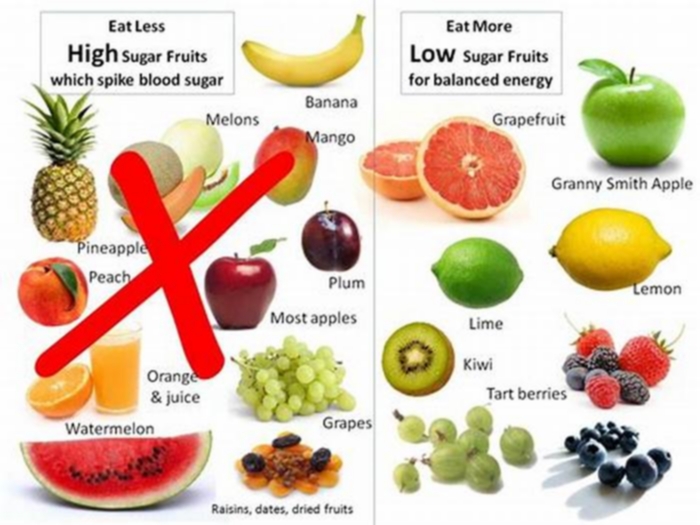foods to avoid for dogs with yeast infection

What to Feed When a Dog Has a Yeast Infection
Like most dog parents, you may have heard that a change in diet can help your four-legged friend recover faster from a yeast infection. But if youre not sure what to feed a dog with a yeast infection, dont fret, its all detailed below. Ive also included what foods to avoid.
If you just want a quick answer, below is a short overview of what foods are good for dogs with a yeast infection, with additional detail in the remainder of the guide.
Whilst theres no research that confirms the following foods will help your dogs skin, there are some foods that are said to be good for dogs with yeast infections. These include yogurt, probiotics, fermented vegetables, non-starchy veggies, sugar-free fruits, eat anti-yeast dry dog food, and lean meat protein.
Dogs with yeast infections should be on a strict diet since certain foods can make the infection worse. Heres that list in full that explains what to feed a dog with a yeast infection. As I mentioned, none have been scientifically proven, but they do make a lot of sense.
Best foods for dogs with yeast infections
1. Only feed starch-free and non-sugary foods
When your dog is diagnosed with a yeast infection, your vet will tell you that you should only give them foods that dont have starch or sugar. Theres a good reason for that, as youll read in a bit.
Some of the common vet-recommended foods for dogs recovering from yeast infections are:
2. Dry dog food that doesnt have corn, wheat, or grains
If your dogs current kibble contains starchy ingredients, switching to an anti-yeast diet could help give them a speedy recovery and prevent re-infection.
Its worth mentioning that there are several anti-yeast dry dog foods on the market. Be sure to consult your vet before buying a particular brand.
They will advise you on the best brand and how to introduce this new food.

3. Lean meat protein
If your dog often eats homemade foods, you can stick to lean protein meals such as plain chicken breast and lamb. Your vet can guide you on the appropriate quantity to offer your dog.
Theres conflicting information online about whether fish (such as tuna) is okay food for dogs with yeast infections.
Some experts say the traces of metal in fish makes yeast grow. Others disagree. The best thing to do here is to chat with your vet before offering fish (since its also lean meat protein).
4. Starch-free veggies
Some dog-safe veggies contain lots of starch that can affect your dogs recovery from a yeast infection. If you want to feed them steamed vegetables, go for veggies with no starch and no seasoning (even dog-friendly seasonings like these).
These veggies include celery, broccoli, cucumbers, cauliflower, lettuce, and Brussels sprouts. Make sure not to add any seasoning or oils when preparing these veggies.
5. Low or zero-sugar fruits as snacks
If youd like to give your dog fruits, only offer dog-safe fruits with little or no sugar. These can include strawberries, blackberries, cantaloupes, and peaches.
6. Herbs to boost immunity
You can add a small amount of dog-safe like oregano, basil, and turmeric to your dogs food. These herbs will strengthen your furry friends immunity, which will help fight off the infection.
7. Healthy edible oils (organic)
Something else to consider when debating what you can feed a dog with a yeast infection is to mix a small amount of dog-safe oils in. This is stuff like organic olive oil and coconut oil, as in your dogs food it can do wonders.
Coconut oil has two main components that work well in preventing yeast overgrowth: caprylic acid and lauric acid. These two acids stop yeast cells from multiplying.
Olive oil contains antioxidants that also stop this fungus from growing. Remember to consult your vet on the correct amount of olive or coconut oil to add to your dogs food.
8. Plain yogurt (or vet-approved probiotic supplements)
Remember the healthy bacteria-fungus mentioned earlier?
If your dog has yeast overgrowth, giving them plain yogurt or a probiotic supplement will help restore this balance. Its simple: no yeast overpopulation means no yeast infection.
Probiotic supplements will also strengthen your dogs immune cells ability to fight the infection. Ensure that you only offer probiotics your vet has approved.
On feed plain yogurt to a dog with a yeast infection as this has a lot of natural probiotics. You can consult your vet on how much to serve your dog (and how often) as they recover from a yeast infection.
What foods should dogs avoid with yeast infection?
When feeding dogs with yeast infections you should avoid starchy and sugary foods
Much like in humans, when your dog feeds on carbs (starch), their body quickly converts the starch-filled food into sugar.
The body cells then take up these sugars as energy, which helps your dog stay active.
Most dry dog food and some of the veggies that dogs enjoy have a lot of starch. And if your canine friend has a yeast infection, this starch is a big problem.
You see, this fungus likes to feed on sugar. This is what keeps them alive in your dogs body.
Your dog shouldnt have foods that will make the fungus overpopulate further. Otherwise, the yeast infection will persist.
Feeding your dog starchy foods and high-sugar fruits will only make the yeast continue multiplying. The energy from starchy foods will help them do so.
Another thing is that sugar makes it easy for the yeast to build a biofilm around themselves.
In the simplest terms, a biofilm is a layer covering the fungus. It somehow acts like a shield, making it harder for your dogs immune cells to attack and kill the yeast.
The best dry dog food for yeast infections
In my opinion, the best dry dog food for dogs with a yeast infection is one called Brothers Complete. Its not just me who think this, I saw this comment on social media.
For yeast, my favorite kibble is Brothers Complete. It was formulated specifically to help yeasty dogs. And low carb kibbles are better than high carb kibbles for yeast though. Kibble is never the best food for yeast, because all kibble has to have a pretty hefty amount of carbs to hold together. If you can swing it, canned is better, low carb homemade or raw is best.
Foods you must avoid if dogs have yeast infections
When you avoid feeding starchy foods and extremely sugary fruits, the excess fungus will starve to death. That said, ensure you DONT feed your dog with a yeast infection any of the following as they recover from yeast infection:
- Starchy vegetables such as: pumpkins, sweet potatoes, carrots, peas, green beans, potatoes, and parsnips.
- Grain foods such as: rice, corn, oats, and bread
- High-sugar fruits such as: mangoes, bananas, and pears
More about canine yeast infections
Most dogs get yeast infections at some point in their lives. Its one of the most common (and super uncomfortable) health problems in dogs.
This infection occurs when the naturally-occurring yeast in your dogs body overpopulate yes, naturally occurring.
All dogs have yeast and bacteria on their skin and gut. The healthy kind. In other words, good bacteria and yeast exist naturally on and inside your dogs body.
Every healthy dog has the right balance of these beneficial bacteria and yeast. And as long as theres this balance, the yeast is pretty harmless.
In fact, yeast (in its correct balance) improves your furry friends overall gut and skin health.
But when something triggers this fungus to grow out of control, the overgrowth disrupts the healthy bacteria-yeast balance. Yeast overpopulation is what leads to an infection.
The trigger can be anything from a moist environment (hence why dogs get yeast infections on their skin folds, ears, paws, or genitals) to food allergies, environmental allergies (like pollen), weak immune system, stress, and hormonal imbalances.
Its pretty easy to tell when your furry friend has a yeast infection. Besides a smelly body odor, they will show symptoms such as:
- Constantly scratching the itchy yeast-infested area.
- Inflamed skin (redness on the affected area).
- Shaking their head most times (if the infection is in their ears).
- A bit of hair loss and crusty skin.
Its best if you first take your dog to the vet for professional treatment. Your vet will prescribe anti-fungal medications depending on the underlying cause of the yeast infection.
When your dog is on medication and at the same time eats the right foods, they will recover from the yeast infection much faster.
FAQs on feeding dogs with yeast infections
Homemade dog food for dogs with yeast infection
The most common homemade foods for dogs with a yeast infection are lean meat protein like lamb and starch-free veggies such as broccoli.
Are eggs good for dogs with yeast infection?
Eggs wont make a yeast infection worse in your dog, so can be considered for feeding. However, there is no scientific proof that eggs are good for dogs with yeast infections.
What food kills yeast in dogs?
The GreatPetCare.com website says the following:
Since yeast is a fungus, you can kill them by giving your dog anti-fungal foods. Look for dog food and treats containing caprylic acid, Pau D-Arco, and olive leaf. Pau DArco is rich in lapachol, which kills yeast. Olive leaf and caprylic acid are believed to break down the cell membrane of yeast.
Is pumpkin good for dogs with yeast infection?
The short answer is no since pumpkin is full of starch. Dogs with yeast infections shouldnt have starchy foods.
Worst dog food for yeast infection
As discussed earlier, you should not offer your dog starchy foods or sugary fruits when they have a yeast infection.
Conclusion
In conclusion, there is no absolute proof that one food will be good for a yeast infection. However, we do know that it is proven that certain foods are bad for dogs with yeast infections. Knowing what to avoid is sometimes better than knowing what to put in your dogs food bowl.
That said, there are some foods that are said to be good for dogs with yeast infections. These include yogurt, probiotics, fermented vegetables, non-starchy veggies, sugar-free fruits, eat anti-yeast dry dog food, and lean meat protein.
You might also like
Yeast Infection In Dogs: Causes, Treatments, Foods To Avoid
Extreme itchy and irritated skin with a foul odour can indicate a yeast infection. This is a very common problem in particularly dry-fed dogs today.
Yeast infections in dogs are highly uncomfortable and over time they can cause severe damage to the affected areas. Knowing how to treat yeast infections in dogs is thus a must for pet owners. Luckily there are lots we can do!
In this article, you will learn:
- What Is a Yeast Infection In Dogs?
- Common Areas Prone To Yeast Infection
- Symptoms
- Difference Between The Symptoms Of Yeast Infection And Ear Mites
- Dog Breeds Prone To Yeast Infections
- Causes
- Diagnosis
- Solutions
- Prevention
What Is a Yeast Infection In Dogs?
Yeast (Malassezia) is a naturally occurring, spore-producing fungi that typically lives on your dogs skin without causing any harm. Usually, it is kept in check by a healthy skin and gut flora and robust immune system, but should something upset that harmonious balance, yeast can grow excessively in one particular area, leading to Malassezia Dermatitis or Yeast Dermatitis in dogs.
It follows that yeast infections are common in dogs with:
- compromised immunity resulting from chronic gut issues
- those suppressed by medications
- those consuming a poor diet (usually dry, chemically preserved, and high in carbohydrates).
It also occurs more often during warmer allergy seasons among dogs prescribed antibiotics resulting in impaired gut health.
What Are The Common Areas Of Dog Yeast Infection?
Yeast needs water and heat to grow. Hence, yeast infections in dogs generally occur in warm, moist areas or those that get exposed to the water more often and are more prone to remain wet or moist than other parts of the body, such as:
- Ear canals
- Paws
- Armpits
- Tail
- Skin folds (where the legs meet the body and around the face, neck, and groin)
- Belly
- Anus and vulva
What Are The Symptoms of Yeast Infection In Dogs?
Yeast infections can share similarities with ear mites and some bacterial infections. That is why its best to obtain a diagnosis from a professional veterinarian via a quick, simple, non-invasive ear or skin swab. They will see the little yeast spores under the microscope.
Nevertheless, there are some specific signs and symptoms that you can look out for that will indicate yeast infection in your dog, such as:
1. Intense Itchiness
One of the first signs of yeast infection in dogs is their excessively itchy skin. Toxins from the yeast irritate the skin causing them to consistently scratch the infected areas, nibbling toes, biting or licking that area, even rubbing their bodies against the floor or furniture to relieve themselves.
2. Skin Irritation, Damage, and Inflammation (Usually around the ears, between the paw pads and vulva)
The infected skin becomes incredibly sensitive and changes its natural texture.
At the beginning of a yeast infection, the skin develops a pink or red rash. As they itch it can often leap to scrapes and even cuts around the affected areas which can turn grey or blackish as the dog continues to damage it.
The affected skin area can also get swollen, becoming leathery and thick, greasy, or oily.
3. Crusty or Flaky Skin
Some breeds of dogs get crusty or flaky skin in yeast infection rather than becoming oily. They develop scaling and flaking of the skin that looks similar to dandruff which also drives increased itching and scratching.
4. Ear Issues, Head-Shaking and Tilting
While less of an issue for dogs with erect ears (and wolves), most breeds of dogs now seem to have floppy or partically floppy ears. This is a nice, warm blanket over the ear canal. Hence, dog ears are most prone to yeast infections as they remain warm and moist more than any other part of the body.
Their ears become red and swollen with lots of pain which causes them to rub and scratch around their ears. This leads them to shake and tilt their heads excessively.
5. Dark Discharge
Yeast infection in dogs, especially in their ears, causes a stinky and waxy dark discharge. This discharge looks brown at the beginning and can become as dark as black if the infection becomes more chronic.
6. Nasty Odour
The biggest giveaway of yeast infection in dogs is the funky smell it produces. This distinct foul odour smells musty and cheesy, which is unseen in any other infections.
Other than the abovementioned signs, some dogs may also develop hair loss and drooling due to yeast infections in their skin.
What Is The Difference Between A Dogs Yeast Infection And Ear Mites?
It might get a bit confusing since ear mites in dogs and yeast infections can share pretty similar symptoms.
Both cause dogs to be extremely itchy, shaking their heads or rubbing and causing redness around the ear canals. Both yeast infections and ear mites in dogs cause the discharge of dark waxy gunks.
However, yeast infections in dogs are not contagious like ear mites can be.
But yeast infections in dog ears mainly cause a nasty odour that is not present in ear mites. This sort of musty and cheesy smell can be your determiner to understand what type of ear infection your dog might have.
Ears mites in dogs are also visible to the naked eye, unlike yeast infections which are microscopic.
Veterinarians can easily distinguish which infection your dog may have by taking a swab from your dogs ear and looking at it under a microscope.
What Breeds Are Most Prone To Yeast Infections?
All breeds of dogs can develop yeast infections, but some are more likely to get it than the rest due to their floppy ears, skin folds, allergies, and inadequate immune systems. This include:
- Shih Tzu
- Basset Hound
- West Highland White Terrier
- American Cocker Spaniel
- Dachshunds
- Poodles
- Australian Silky Terriers
- Schnauzers
- Chihuahuas
- English Setters
- Golden Retrievers
- Maltese
- Lhasa apsos
What Causes A Dog Yeast Infection?
Yeast infections in dogs are usually a secondary problem. Meaning there is usually some other primary issue that weakens the bodys immune system and upsets the skins natural balance, allowing the yeast to get out of control.
Some of the most common causes of yeast infections in dogs are:
1. Food Allergies or Food Sensitivities
The most common reason for a dog to develop a yeast infection is an unhappy skin or gut biome.
A healthy gut flora keeps everything in check, not only digesting your food and working with your immune system but also actively works to keep nasties like yeast down. This is OUR host!
Dysbiosis is the term used to describe when a gut flora goes out of whack.
Many things cause this an infection, illness, or stress. But one of the most common causes is an undiagnosed and untreated allergy or sensitivity to certain foods. If you keep eating the problem proteins, your immune system will be on constant alergy, under constant siege.
Over time, the chronic inflammation result disturbs the gut and its ability to function. A shift in gut flora is the inevitable result.
This raging internal inflammation, coupled with a shift in gut flora, begins to materialise on the skin or in the ear which swells and heat up, becoming itchy, agitating the dog, and upsetting the skin flora in the process.
This is the opening Malassezia needs!
With skin flora balance suffering, this yeast can now grow exponentially, particularly when it is warm, wet, and well-fed.
In most cases, the dog is on a poor diet, usually (but not always) ultra-processed, chemically preserves (upsetting the gut flora), and almost always one high in carbohydrates (cereal, potato, rice, fruit, etc).
Yeast loves carbs/sugar. Needs it to multiply.
Give them a heated, moist area (swollen ear), and now plenty of food, yeasts will fester!
2. Other Allergens and Contaminants
Pollens, smoke, molds, chemical abuse (flea and tick treatments, etc), poor breeding (with not enough access to the outside while young and developing the immune system) and stress can all upset the skin flora which in turn can leave your dog prone to yeast infections.
Since hot and humid weather helps the yeast grow out of control, having wet or moist skin, especially moist ear canals and skin folds, is a significant catalyst for yeast infections.
3. Antibiotic Use
During allergy seasons, dogs that are prescribed antibiotics are more prone to yeast infections. Antibiotics dont necessarily cause infections, but being on them can upset the balance of good bacteria on the skin. Without them keeping yeast in check, youre in trouble.
4. Disease and Steroid Medicines
Some dogs have underlying medical conditions, including hormonal problems and autoimmune diseases that cause them to become more susceptible to yeast overgrowth and develop chronic yeast infections.
Most dogs with food sensitivities get prescribed medicines with steroids. Steroids not only repress the immune response but are known to damage and perturb the skin potentially making dogs more prone to yeast infections, as they do in humans.
How To Diagnose a Yeast Infection In Your Dog?
The only definitive way to diagnose yeast infections in dogs is to consult a veterinarian. If you bring your pet to the clinic, the vet will confirm the infection through a method called cytology or cytopathology. By taking a hair or skin sample from the affected area of your dog, the vet will review it under a microscope to determine if it is a yeast infection or not.
If the infected area is inside the ear canals, then the vet will do further tests to determine if its only a yeast infection or if its related to other causes of dog ear infections as well.
Solutions For Yeast Infections In Dogs
After properly identifying that your dog has yeast infections, there are many natural tips and tricks you can use to remedy it. These include:
1. What To Feed A Dog With a Yeast Infection
Dry ultra-processed food must go. First off, your dog has a gut flora issue, they do not need chemical preservatives napalming them while they try to recover. Also, most dry (and canned) food is insanely high in dextrinized, rapidly digested carbohydrates such as wheat, corn, potato, pea. These are just one tiny digestive step to being sugar and yeast needs this to thrive.
You must move this dog to a fresh, biologically appropriate diet of raw meat and bone.
Its important this diet is completely free of carbohydrates (cereals such as wheat and corn, bread, potatoes, rice, peas, carrots, pumpkin, honey, fruit, etc). We are trying to starve the yeast into submission.
If you are struggling to source pre-made raw dog foods free of fruits and vegetables, you might consider learning how to make your dog diet according to your pets needs.
Again, the most important cure for dog yeast infections is to provide a fresh, healthy diet completely free of carbohydrates to your dog.
This means you must remove any sugary treats from the diet of your dog.
Not only does sugar feed the yeast and actually repress the immune system by itself by spiking insulin, but it also increases the likelihood of many inflammatory issues in the dog such as obesity, cancer, pancreatitis, and rotten teeth, which will further weaken your dog when they need all their resources to fight this infection.
2. Topical Treatments For a Dog Yeast Infection
If we permit the infection to fester deep in the ear canals, oral medicines and even surgeries may be required. So lets try a few things first before those things are even considered.
Our product Propythium eats yeast for breakfast!
Pythium oligandum is an incredible microscopic algae that the world has known about for some years, but only recently did mad scientists think to apply it to topical skin conditions in pets, horses and humans.
Pythium is a non-pathogenic (doesnt harm plants or animals), microscopic, yeast-like organism that normally lives in the soil.
There are over 50 species of it so far discovered but among the most useful are those discovered around the roots of many plants around the world, in particular Pythium oligandrum.
It works via mycoparasitism. In essence, it consumes other fungi for survival. It attacks those organisms, extracting nutrients such as nitrogen, carbon, and nutrients for reproduction, and killing the organism in the process. It then creates zoospores that actively seek out more of that fungi and its spores.
Beyond mycoparasitism, P. oligandum further secretes enzymes curb bacterial growth in the area so it is not disturbed while its doing its thing. Most importantly, studies show, asides a reduction of pathogenic bacteria present, it does not induce significant shifts in the hose bacterial flora in the process (Vallance et al. 2009 & 2012).
Once resources deplete, P. oligandrum encapsulates and soon leaves its host to its natural environment, at which point all normal microflora returns activity can return to the area.
You can buy our Propythium range here
There are many natural ways to treat a yeast infection in a dogs ear, such as using a Propythium ear cleaner.Another great method appears to be garlic oil with mullein.
Check out those reviews, many for humans but many for dogs too. All for ears!
How to use it?
Simply soak a cotton swab with the oil and make his ear nice and juicy. You can even drop it in, if he allows you. You need that ear nice and juicy so you can massage it right down to the bottom of their L-shaped ear canal.Another gentle solution that will restore the pH level in the ears and help eliminate all gunks and nasty smells is Apple Cider Vinegar (ACV).
ACV essentially extracts the water from the yeast cells, killing it straight away. Its also an excellent anti-bacterial solution, which can often get into minor scratches made in the ear from the dog scratching at his poor ears.
If you want to properly clean more significant parts of your dogs whole body, then using a natural anti-fungal shampoo might help them.
The Anti-Bac, Anti-Fungal Itchy Dog Skin Shampoo from Cooper & Gracie seems to be going down extremely well with people treating yeast infections in dogs. Again, all those reviews dont lie.
Wash your dog correctly, following the recommended procedures for maximum effect. It is a natural shampoo with tea tree, clove, and peppermint, which not only have a cooling effect on the skin but kill yeast in the process.
Keep the lather on the skin for at least 10 minutes before rinsing. This will help remove the greasiness or the flakiness of the skin.
Into that bath, I would dissolve in some Epsom salts. It is high in magnesium which is used to reduce itch in dogs, horses, and humans.
TIP: You can even add a few drops of magnesium to a second bowl of water, see if they drink it. No dosage needed. They will take what they want, should they need it, via a process known as Zoo Pharmacognosy, which means he knows what he needs to fix him.
Also, make sure to dry your dog well after his bath!
I often find a pr0biotic spray after a bath is an excellent way to help replenish the struggling skin flora.
If you have a particularly stubborn infected area, such as between the toes, and you dont want your dog walking garlic oil all over the place (and bearing in mind an ACV wash might work) please know that your vet has a variety of very effective anti-fungal creams and ointments.
Common antifungal creams, lotions, and ointments include miconazole, clotrimazole, and terbinafine.
3. Oral Treatments For Dogs With Yeast Infections
Most yeast infections come from within, so topical treatment alone is unlikely to be effective by themselves. You need to tackle the yeast internally too.
Some oral treatments include:
- Good quality canine probiotics will help restore balance in your dogs gut health, fighting the yeast from within. Probiotics is really a numbers game, youre throwing the troops at the guns. The special encapsulation means these probiotics evade the dogs highly acidic gut acids and open at a certain pH in the intestines where they hope to do some good. Probiotics are best given on empty stomachs.
- Give digestive enzymes with cellulase. Yeast is clever. It encapsulates itself in cellulose as it knows we cant digest it. This enables it to hang around longer but also evade the various bits we give the dog when trying to kill it. Cellulase will digest the outer walls of yeasts. Sprinkle this powder on their food like salt.
- Now that the yeast is exposed, we can give the dog a number of natural bits to help tackle yeast infection. One of the most popular is a little crushed garlic in their food. You can give a 15kg dog half a crushed clove of garlic per day and yes, its very safe. Please read the article to understand more, should you be concerned.
- Dried olive leaf (thanks to a high oleuropein content) is known to be effective at zapping yeast in dogs. Add 1-2 gm of powder per 10 kg of dog food every day.
- Also effective are oregano oil and grapeseed extract. Feed each one for two weeks. You MUST dilute oregano essential oil as it can burn. The normal dilution is 1 part oregano essential oil with 4 parts carrier oil (coconut/olive). This you can then drop on the food. Grapeseed extract comes in liquid or powder form. I prefer this liquid one. Give dogs with yeast conditions 2-3 drops of this twice daily for two weeks.
How To Prevent Yeast Infections In Dogs
We want to avoid a yeast infection in our dog. Thankfully, there are a number of steps we can take to help keep our canine friends safe. Some of these preventative methods are:
- Remove all carbohydrates, chemically preserved dry food and treats from your dogs life. Give your pet a fresh meat and bone diet free of carbs/sugar. Do not compromise your dogs gut flora or immune system with anything else.
- If your dog is prone to yeasty ear or skin fold infections, then regular (weekly) treatments using garlic oil or Apple Cider Vinegar Solution will help prevent most types of ear infections, particularly during hot and humid weather.
- Use a little prevention often (crushed garlic, now and again, as above).
- Beware of your pets food allergies or sensitivities.
Conclusion
There is no vaccine to prevent a yeast infection in dogs. So the only way to prevent yeast infections in your beloved pets is to take the precautions above and beware of the symptoms.
If you suspect that your dog has a yeast infection and you feel you need a little hand-holding, thats what were here for. You can book a Zoom consult with Dr. Conor Brady for a diet and treatment plan that is most appropriate for your pet.


